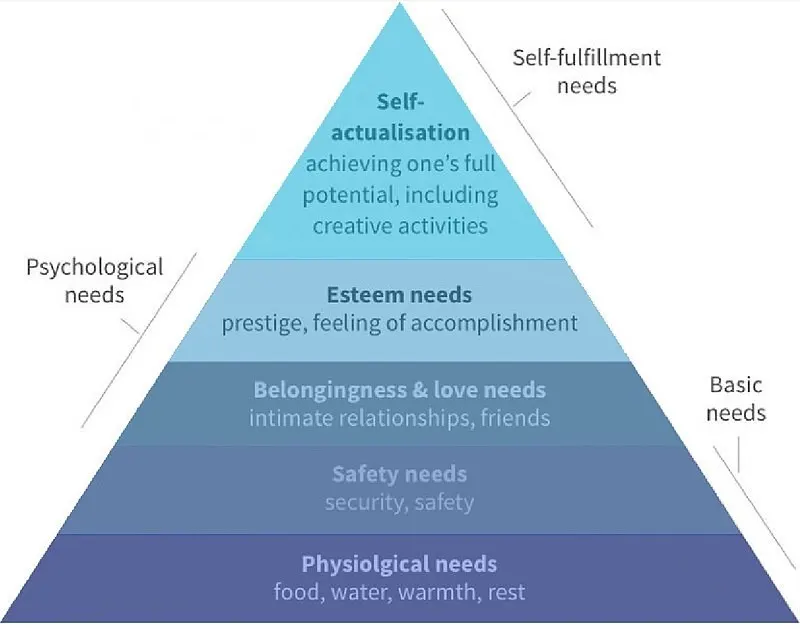Your value proposition is the one thing you offer your potential customers that your competitors can’t.
It’s what generates the first bit of prospect interest and informs whether or not they want to find out more about you.
You’ll find all kinds of articles, posts and TED talks that discuss how to write a value prop. We like using Maslow’s hierarchy of needs, proposed by psychologist Abraham Maslow in 1943. Here’s a basic diagram of the hierarchy:

According to Maslow, this hierarchy governs human emotions and choices. The further down the pyramid, the more important the need, the more critical it be met and the more important it will be to a prospect.
To write a value prop, start by figuring out where on the hierarchy your product or service fits:
- A pair of thick winter gloves meets the need for warmth
- A bike helmet meets the need for safety
- A flower shop meets the need for love
Let’s look at how to write a value prop for a gym because your neighbourhood probably has more than one. So, imagine three gyms in an area:
GYM A
Offers a self-directed experience with all the equipment anyone would need.
GYM B
Offers group fitness classes.
GYM C
Offers a women-only environment
These are the unique features of the gyms, but they’re not value prop statements because they’re about the gyms and not about the customers.
Now, if you’re a gym rat (or you’ve ever been to a gym), you know that everything in there is designed to make you push yourself harder, get stronger and fitter, and feel better about yourself physically and mentally — all functions of the Maslow need for self-esteem and accomplishment.
So, once we know what the unique features of our product or service is, the first step towards a compelling value prop is to restate it as a function of the need it meets:
GYM A
Gets members feeling good and accomplishing with all the gear they’ll ever need.
GYM B
Gets members feeling good and accomplishing with support from friends and professionals.
GYM C
Gets members feeling good and accomplishing in a non-judgemental environment.
Now that we have a better understanding of what each gym is doing for the prospects, we’re closer to our value props. But we’re not there yet because these statements are speaking about the reader. A value prop needs to speak to the reader.
And to be an effective value prop, it needs to reach as far down the pyramid as possible because the further down you are, the more emotionally affected your prospect will be — and emotions drive interest, which drives trial.
Note that not all products or services will touch more than one need, and you should never try to assign a need you don’t fill. That’s the easiest way to have “bullshit” called on you.
So, let’s look at the three gyms again:
GYM A
Meets the needs for self-esteem and accomplishment (no movement down the pyramid).
GYM B
Meets the needs for self-esteem and accomplishment, but also meets the need for belonging to a group (one level down the pyramid).
GYM C
Meets the needs for self-esteem and accomplishment, but also meets the need for the safety of a single-sex environment (two levels down the pyramid).
Now that we know what needs each gym is ultimately meeting, we can explain to readers, in a simple and compelling way, what they can expect from an experience there that they wouldn’t be able to expect anywhere else. That’s how to write a value prop.
GYM A — Value Prop:
Do your workout. Holler if you need something.
In our hands-off environment, you can meet your goals on your terms with all the equipment you need to do it.
GYM B — Value Prop:
Push through together.
Nothing motivates you quite like motivating someone else.
GYM C — Value Prop:
Feel safe. Get strong.
Sweat freely among other women.
Net-net: Your value prop is about your customer’s life and what you can do to make it better.
Re:word meets the need for self-actualization. Here’s our value prop: the words you need for the yes you want.
What need does your business meet and does your value proposition convey it?
